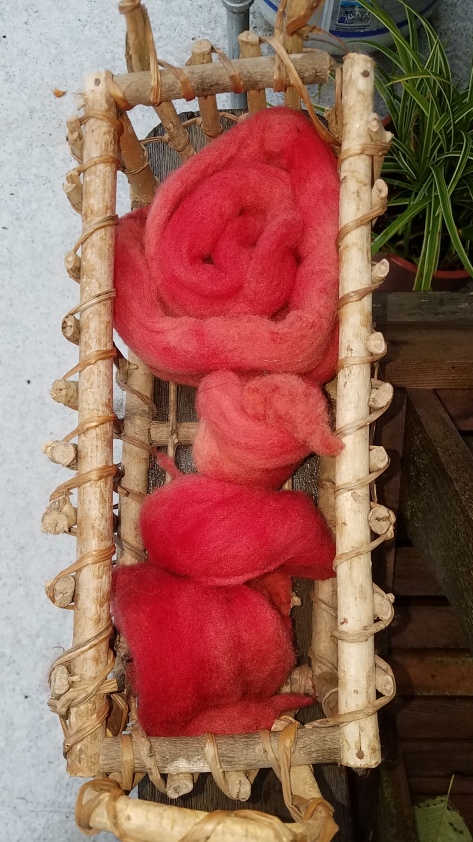This was an unintended experiment with unintended—and happy!—results. I’m not yet finished with it, but since many mushroom dyers are finding and dyeing with Hypomyces lactifluroum (Lobster mushrooms) right now, I wanted to pass this along.

These brilliant reds are actually from an exhaust bath . . . really! Here’s how they came about:
In the spring of 2018 I gave a dye workshop on Vancouver Island. The previous two mushroom seasons had been very poor because of extremely dry summers, and I didn’t have a lot of dried mushrooms to play with, but still had a few lobster parings on hand. I set aside 25 grams of these for the workshop and, as usual, put them in an old nylon stocking for the dyebath.
The workshop got some good results, and when none of the participants wanted to take the spent lobster parings home with them (probably put off by the fishy aroma), I took them home myself. The first exhaust gave a pale orangey pink; the second exhaust a disappointing beige. I had heated these in a makeshift double boiler (the dyebath in a large glass jar that sat in a pot of boiling water), and I just left the disappointing parings where they were, to be dealt with later. This is a bad habit, I know, because so often those spent mushrooms can be most unpleasant to deal with later, but the jar got left, ignored, over the winter and into the spring (we’re now talking spring of 2019).

In my pre-dyeing-season cleanup, I rediscovered the jar, only to find that the liquid (in which the pared bits were still steeping), now much reduced through evaporation because I’d left it outside uncovered, had turned a brilliant deep red!
Into a small dyepot it went, with just enough water to cover a generous piece of wool roving.
The colour in the rovings in the image at the top of this post is uneven because I didn’t want to agitate the wool in such a small amount of liquid. The wool at the bottom of the basket is actually the fourth exhaust, and there’s more to go. The wool was mordanted with alum; no modifiers were used, although in the end I might dip them in a high-pH solution to shift to a more purply red.
So hang onto those Lobster parings, fellow dyers! You never know what might result.





















